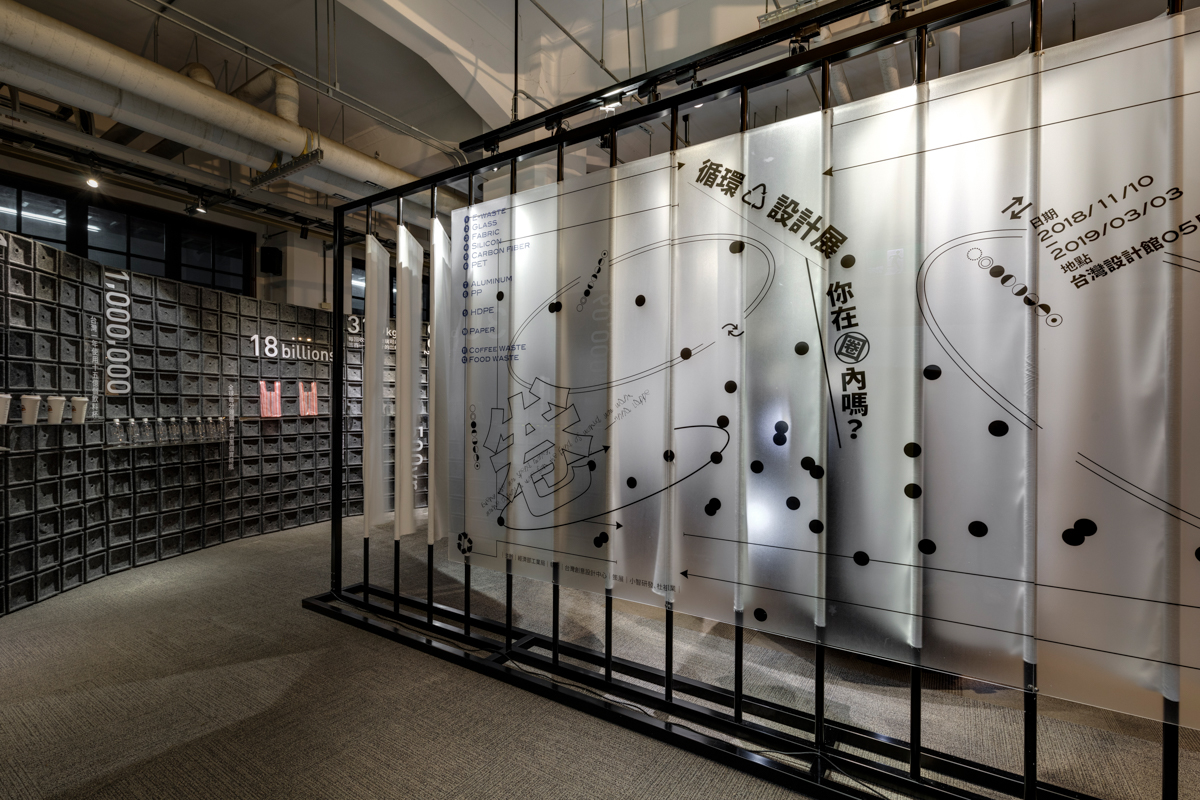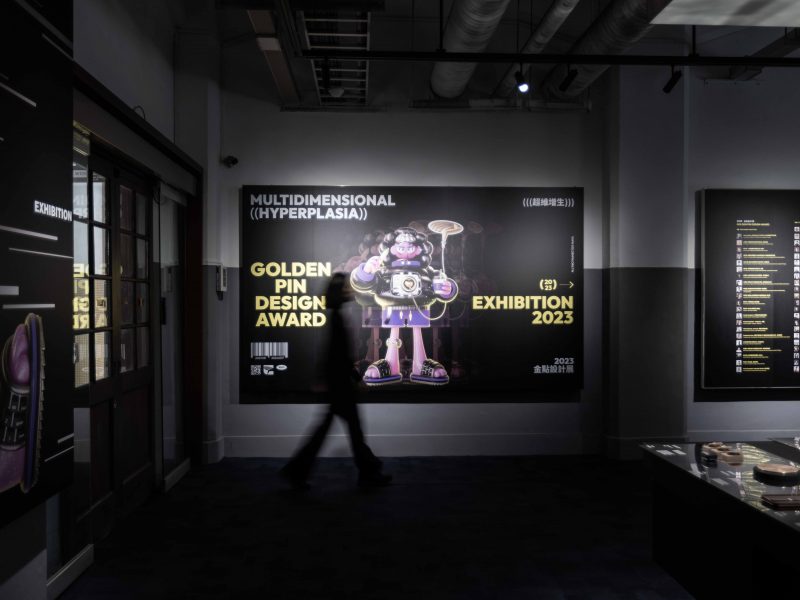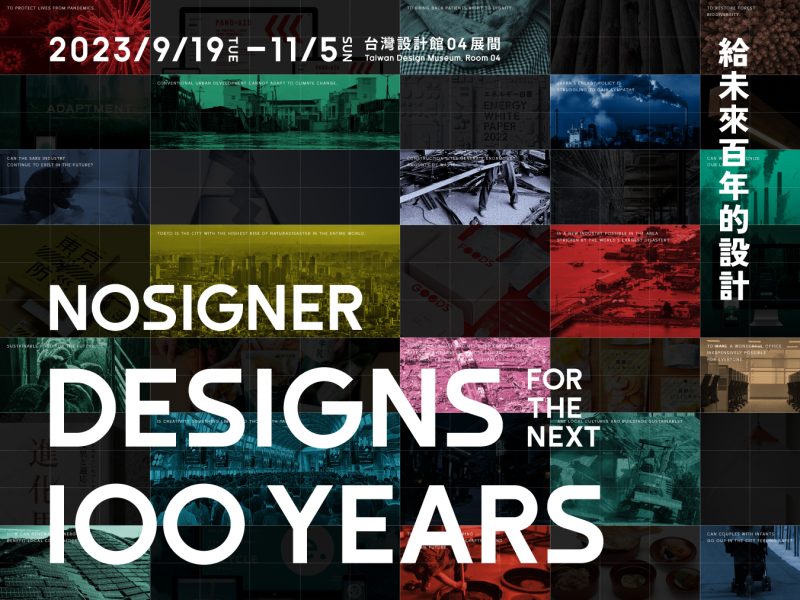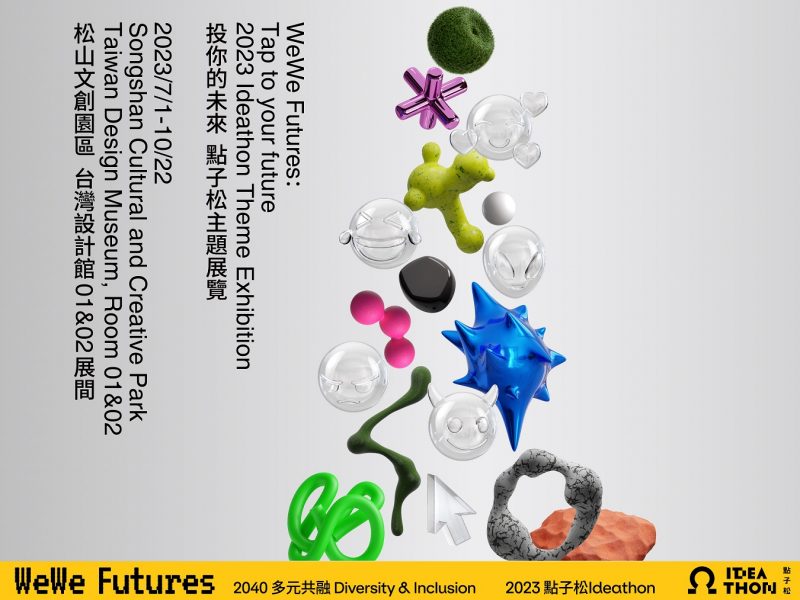Environmental issues have long been a widespread engagement by each and every household in Taiwan. Citizens from the elderly in their eighties to pre-school children all implement waste classification in their daily lives. The cultivation of environmental awareness for the past 20 years has made catchy environmental slogans and ideas well known. Taiwan’s proactive efforts in implementing waste classification are second to none globally and also made headlines around the world.
Now is the best time to proceed to the advanced version of environmental protection: circular design. The general public has developed basic environmental protection concepts and can spontaneously perform waste classification. The next step is setting the goal of establishing a circular system for consumers, designers and manufacturers to work together. Each point-like individual who used to pay silently is now connected into lines, further weaved into planes, and finally constructs an integrated circular economy!
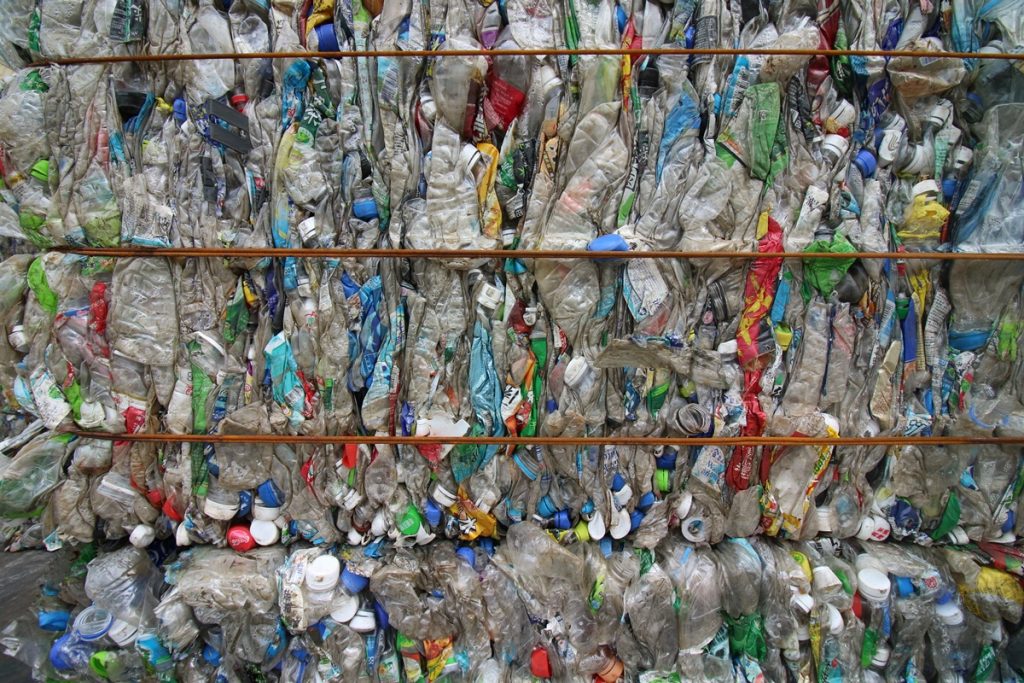
▲ Can the classified waste become something useful and re-enter our life through circular design?
The Stunning Opening of Current Waste Situations

▲ Are you aware of the number of plastic bags being discarded in Taiwan every year?
1. Everyday Items Explosion Zone
The two long tables at the exhibition center are themed differently. On the “Recycle” table top, the curator starts from dissembling consumer goods commonly used in our daily life such as computers, lamps, bicycles, food packaging, shoes and coats. These materials are distinguished by using colored lines to describe what parts can be further recycled and reused once entering the recycling system. The most easily recycled materials in the current recycling system are glass, metal, paper, and plastic. Other categories such as blended fabric, rubber, leather, wood, and electronic components cost much higher for recycling and remanufacturing.
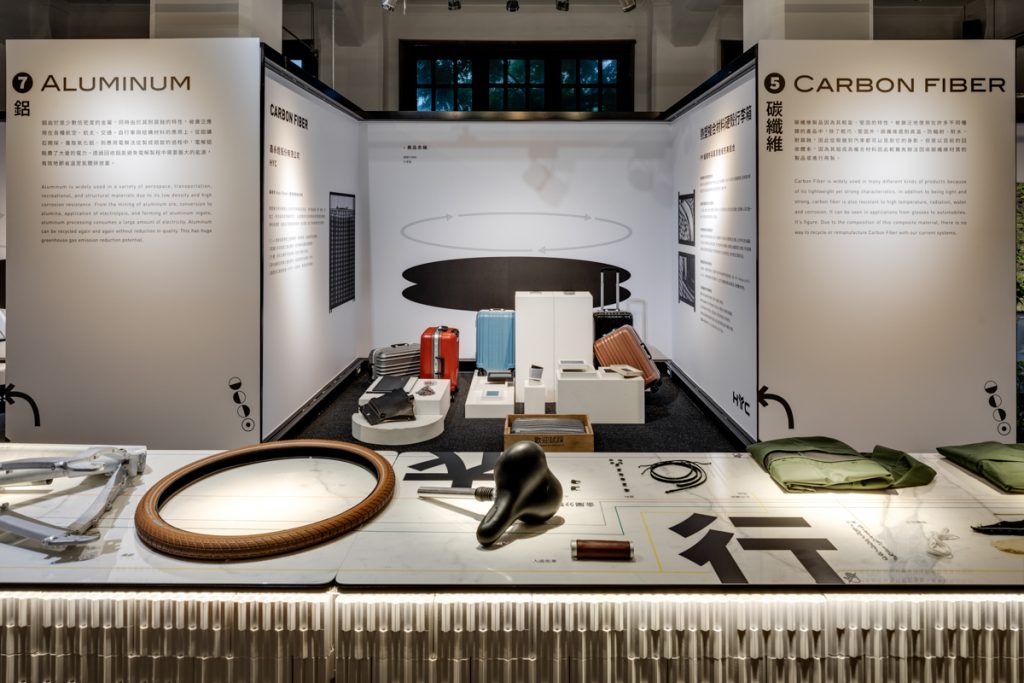
▲ The front table top is themed on “Recycle,” presenting a detailed disassembly of the objects in our daily life.
To reflect the circular design process, the following table top is themed on “Reborn” as a continuation of the “Recycle” stage presented on the front table. By using industrial processes such as extrusion, melting, pressing, casting, injection, and hot pressing, the four recycling extracts of glass, metal, paper, and plastic can be remanufactured and reborn into industrial products and goods in consumer’s life like clothing, containers, and others.
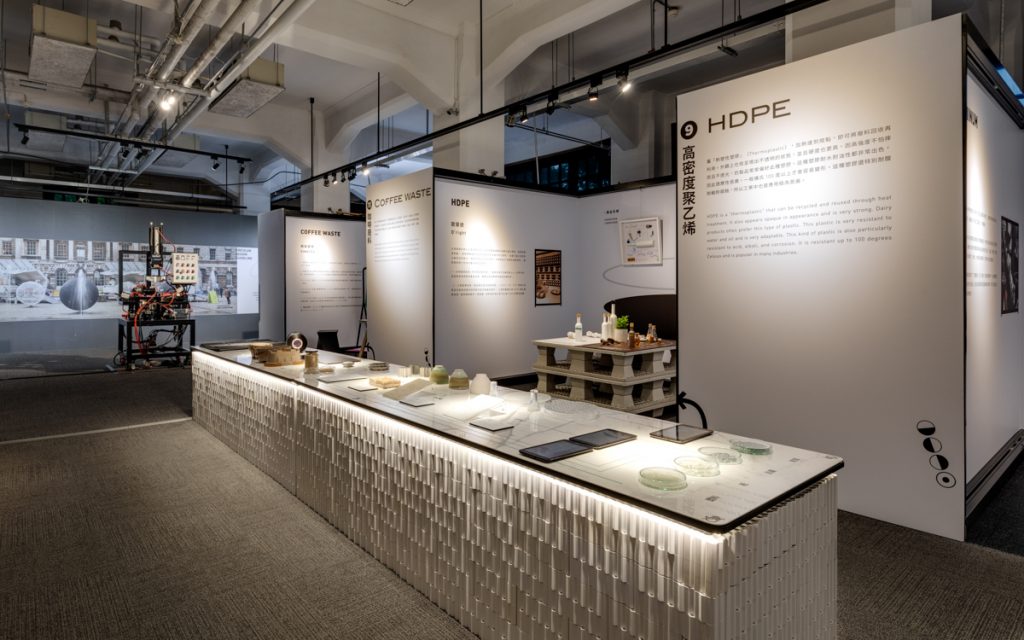
▲ Can the products “reborn” through circular design possess unlimited possibilities?
The two sides of the exhibition are divided based on 12 different materials to show the recycling/remanufacturing technologies employed by domestic manufacturers in different fields. These include E-waste PCBs (REnato Lab), glass (Spring Pool Glass), waste fabric (Miniwiz), wafers (GET-Green Energy), carbon fibers (HSIN YUNG CHIEN), PET (ECOMAX), aluminum (Darfon Electronics), PP (Da Fon Environmental Technology), HDPE (O’right), paper (CULTU-RE EXPERIMENT), waste coffee grounds (Singtex), and food waste (Bionicraft).
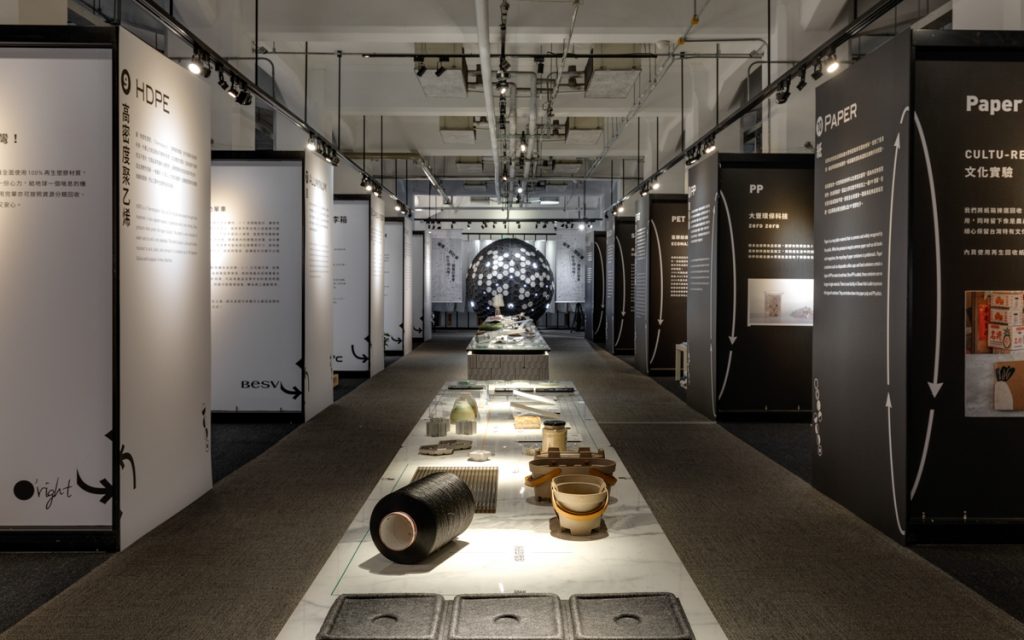
▲ Through the 12 recycled materials, the respective manufacturers demonstrate the cross-sector collaborations in circular design.
3. Sustainable Exhibition Supplies
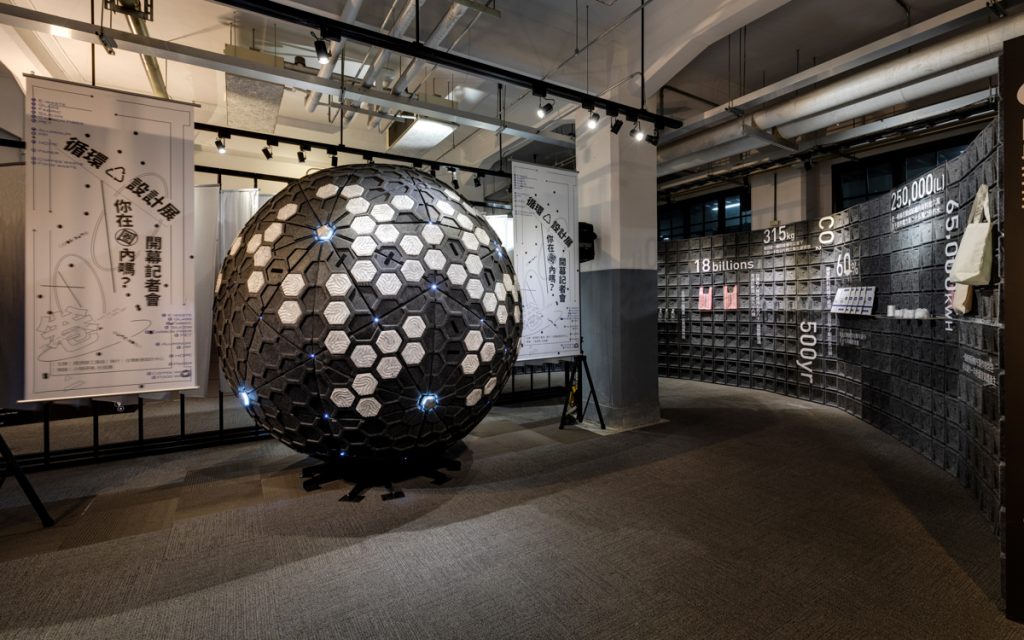
▲ The gray partitions at the entrance are made of hot-pressed recycled plastic.
4. Interactive Installations
Visitors can see the recycled plastic hot-pressed tiles and recycled PET-made spheres in this exhibition. They can also participate in the unique process of remanufacturing recyclables into new items.
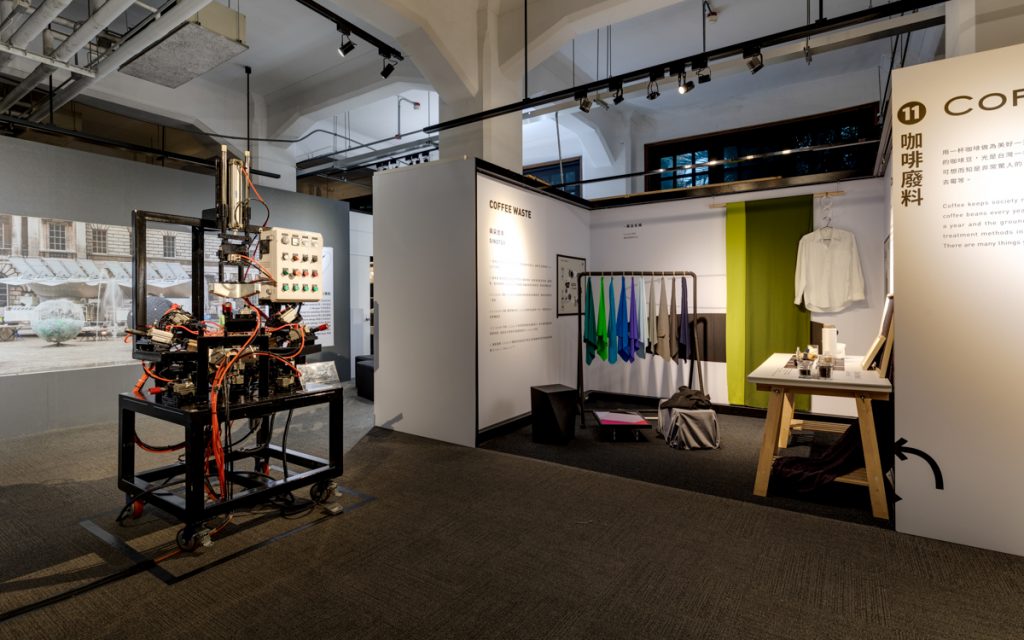
▲ The recycled plastic hot-pressed tiles developed by Miniwiz are produced by the machine on the left.
5. Waste Art Corridor
In the hallway outside the exhibition presents six large collaged art creations. Each is themed on a respective waste material, including food packaging, plastic products from daily necessaries, clothing, metal, paper packaging, and motherboards/batteries. They are like eye-catching contemporary art at first glance, but a close look leads to an overwhelming realization that we have produced a variety of waste in our daily consumption.
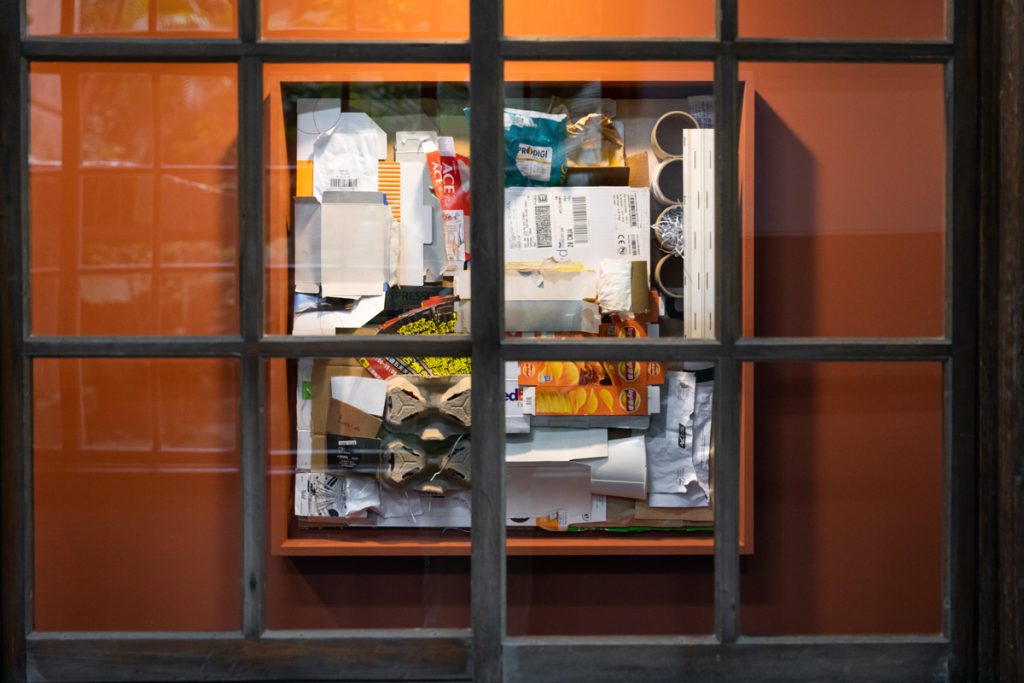
▲ The artwork created from living waste in the Waste Art Corridor allows visitors to reflect on the importance of sustainable living.
Our Consumption Decides The Future Of The World!
The increasing amount of waste directly results in environmental pollution, which further impacts on human health through the food chains. While this is happening, one of the biggest warnings is the traces of plastic particles detected in our food and drinking water. With the resources on the earth being exhausted, and the advanced governments constantly establishing environmental protection mechanisms, the inevitably decreasing resources for future manufacturing will cause the increase of manufacturing costs. Being a responsible consumer, the simplest and most effective actions to change the situations are as follows:
1. Identify the feasibility of consumer products entering the recycling system in the future
2. Choose products made of a single material or simple sources
3. Reduce the purchase of goods with added glue or coating
4. Purchase items made from recycled materials
In the past, we thought the recycling task had been accomplished by sorting waste into recycling bins. But now and in the future, we can do more and better. We can choose materials and items easy for recycling on our next purchase, and support new products made from waste materials. By doing so, consumers and production circles can form a friendly circular design system, not only lowering the production cost and retaining affordable quality, but making our mother Earth lively and sustainable.

“Circular Design Exhibition – Are You In-Circled?” Exhibition Information
Dates: November 10, 2018 ~ March 03, 2019
Time: 09:30 – 17:30, Tuesday to Sunday
Venue: Exhibition Zone 5, Taiwan Design Museum (Songshan Cultural and Creative Park)
Admission Fees: Adults NTD100, Students and Groups NTD 80 (Fees may vary based on nature of exhibition;latest changes will be announced on the Song Yan Court website.)
Official Organizer: Industrial Development Bureau, MOEA
Executive Organizer: Taiwan Design Center
Curatorial Advisor: Miniwiz, Blues To

